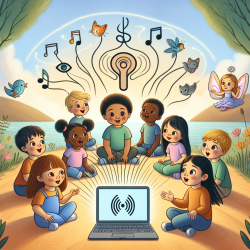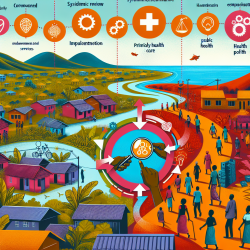Introduction
Platinum-based chemotherapeutic agents, including cisplatin, carboplatin, and oxaliplatin, have significantly improved survival rates in pediatric cancer patients. However, their use is not without risks, particularly ototoxicity, which can lead to permanent hearing loss. This blog explores the findings from the research article "Assessment and Management of Platinum-Related Ototoxicity in Children Treated for Cancer" and discusses how practitioners can leverage this information to improve patient outcomes.
Understanding Ototoxicity
Ototoxicity refers to ear poisoning, which results from exposure to drugs or chemicals that damage the inner ear or the vestibulocochlear nerve. Platinum compounds, while effective against cancer, can cause irreversible hearing loss due to the degeneration of hair cells in the ear. This type of hearing loss is typically bilateral, sensorineural, and permanent.
Key Findings from the Research
The research highlights several important aspects of platinum-induced ototoxicity:
- Mechanisms of Damage: Platinum compounds cause oxidative stress and DNA damage in cochlear cells, leading to apoptosis.
- Genetic Predisposition: Certain genetic variants may increase susceptibility to ototoxicity, while others may offer protection.
- Assessment and Monitoring: Regular audiological assessments are crucial for early detection and management of hearing loss. High-frequency audiometry can be particularly useful for early diagnosis.
Practical Implications for Practitioners
Practitioners can implement several strategies to mitigate the risk of ototoxicity in children undergoing chemotherapy:
- Baseline and Ongoing Audiological Assessments: Establish a baseline hearing profile before treatment and conduct regular follow-ups to detect any changes early.
- Genetic Testing: Consider genetic testing to identify patients at higher risk of ototoxicity, allowing for tailored monitoring and intervention strategies.
- Protective Agents: Research into protective agents like sodium thiosulfate shows promise in reducing ototoxic effects, although further studies are needed to confirm efficacy and safety.
Encouraging Further Research
While current strategies offer some protection, there is a need for continued research into effective otoprotective agents and interventions. Practitioners are encouraged to participate in and support ongoing research efforts to develop comprehensive guidelines for managing ototoxicity in pediatric oncology.
Conclusion
Ototoxicity remains a significant concern in pediatric oncology, but with careful assessment and proactive management, its impact can be minimized. By integrating research findings into clinical practice, practitioners can enhance the quality of life for children undergoing cancer treatment.
To read the original research paper, please follow this link: Assessment and Management of Platinum-Related Ototoxicity in Children Treated for Cancer.










